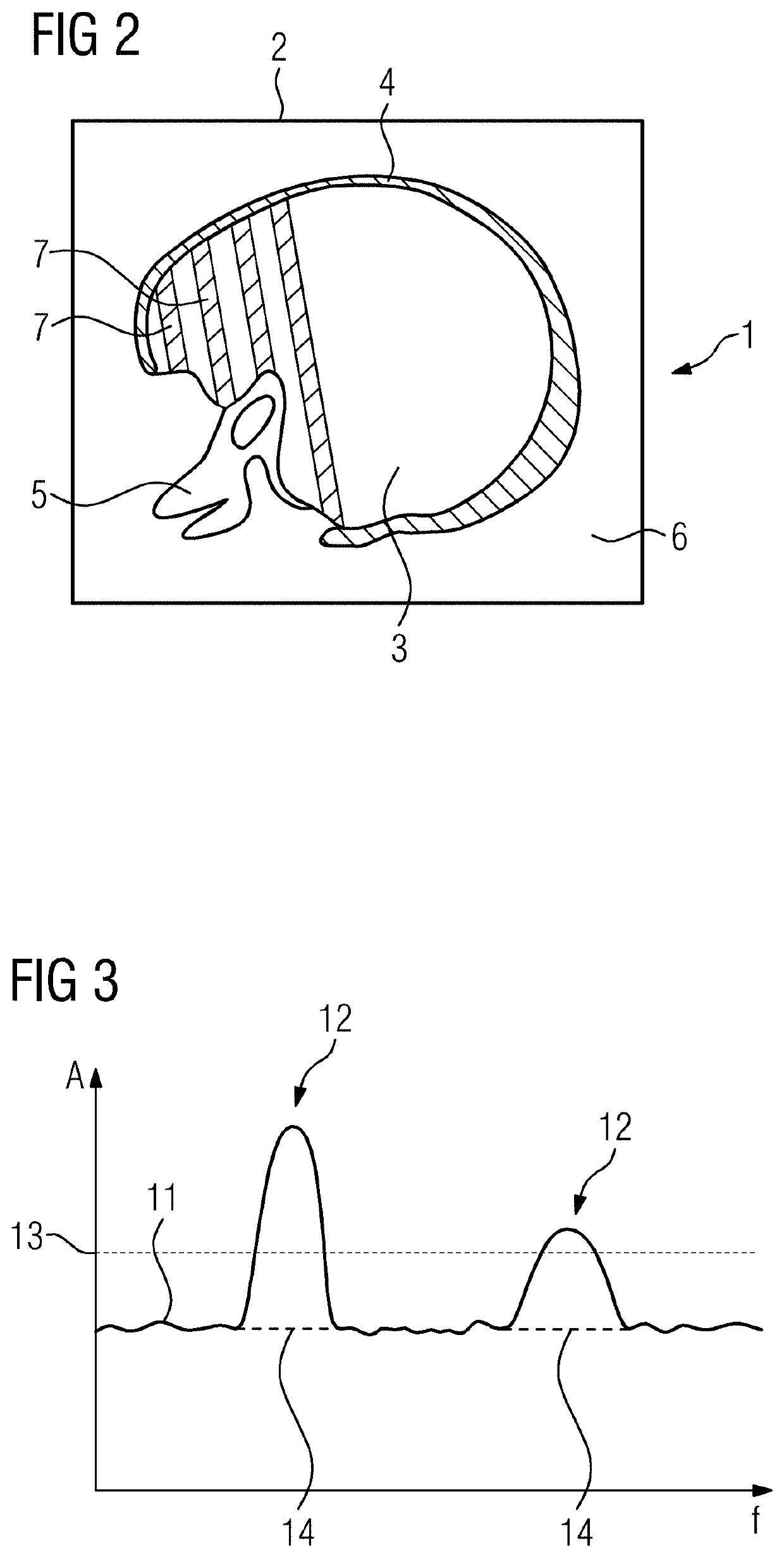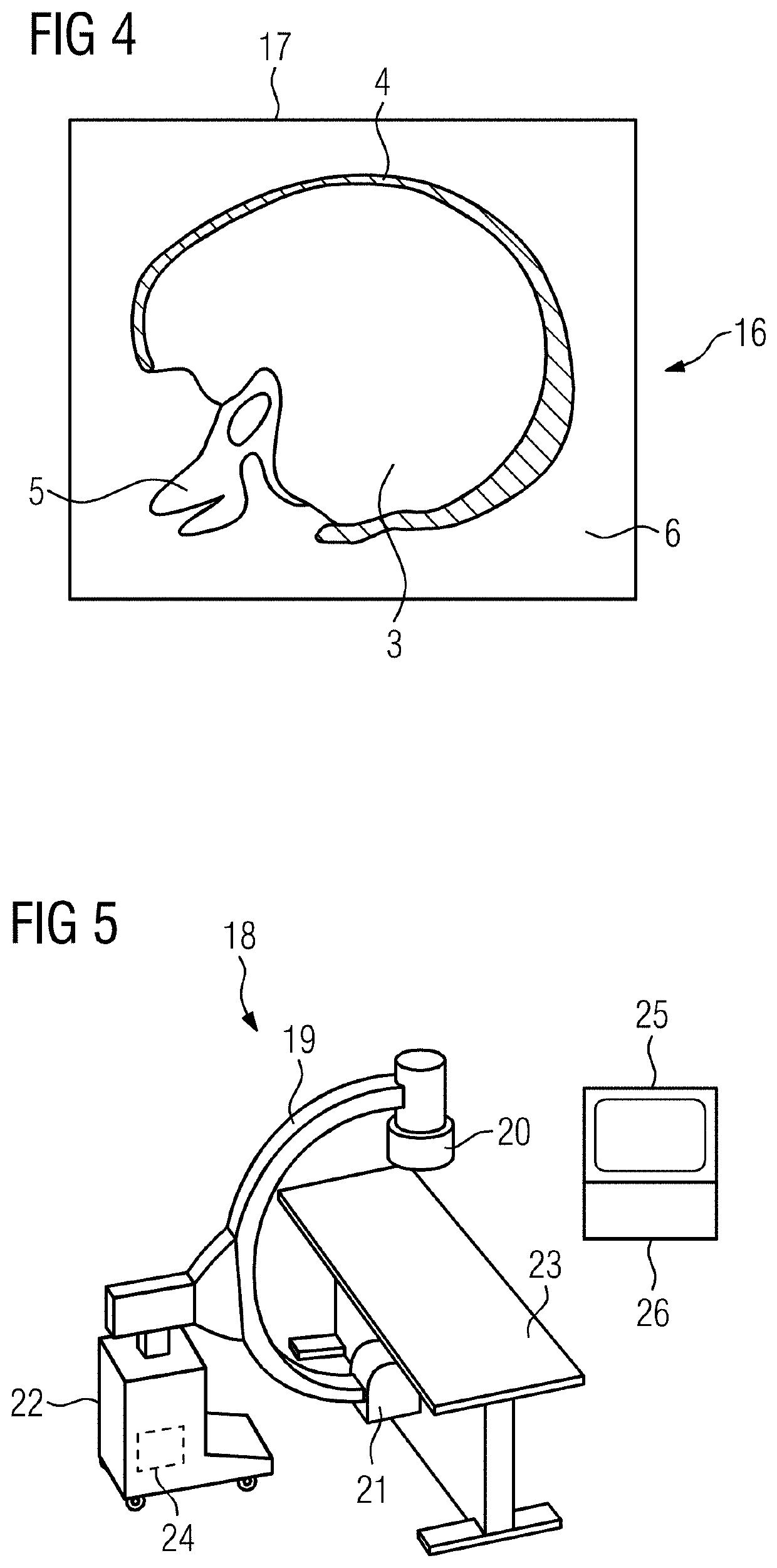Method for artifact reduction in a medical image data set, x-ray device, computer program and electronically readable data carrier
a technology of image data and artifact reduction, applied in image data processing, diagnostics, applications, etc., can solve problems such as streak artifacts, streak artifacts, streak artifacts that may also occur, and become problematic for diagnosticians to reliably identify low-contrast details, etc., to achieve weaker weighting, image value differences, and streak artifact suppression
- Summary
- Abstract
- Description
- Claims
- Application Information
AI Technical Summary
Benefits of technology
Problems solved by technology
Method used
Image
Examples
Embodiment Construction
[0030]FIG. 1 shows a flow chart of an exemplary embodiment of a method, where a patient's head (e.g., the brain as a soft tissue region) is to be examined with three-dimensional (3D) X-ray imaging (e.g., with administration of a contrast agent). For this purpose, projection images of the head as the acquisition region are acquired from different projection angles using an X-ray device with a C-arm (e.g., an angiography device), whereupon from the two-dimensional projection images, a 3D image data set 1 of the acquisition region is reconstructed using known procedures. This forms the starting point for the method described. In principle, the image values (e.g., HU values), at which soft tissue regions in the image data set 1 are typically imaged, are already known. These image values are described by a pre-determined image value interval.
[0031]FIG. 2 shows a schematic sketch of exemplary content of a 3D image data set 1 of this type, a two-dimensional sectional image 2 of which is sh...
PUM
 Login to View More
Login to View More Abstract
Description
Claims
Application Information
 Login to View More
Login to View More - R&D
- Intellectual Property
- Life Sciences
- Materials
- Tech Scout
- Unparalleled Data Quality
- Higher Quality Content
- 60% Fewer Hallucinations
Browse by: Latest US Patents, China's latest patents, Technical Efficacy Thesaurus, Application Domain, Technology Topic, Popular Technical Reports.
© 2025 PatSnap. All rights reserved.Legal|Privacy policy|Modern Slavery Act Transparency Statement|Sitemap|About US| Contact US: help@patsnap.com



